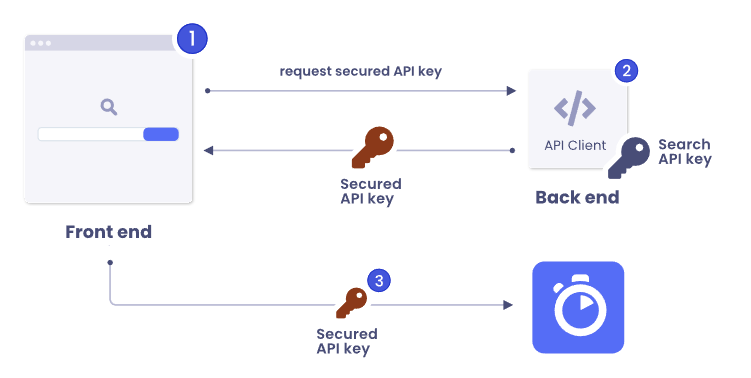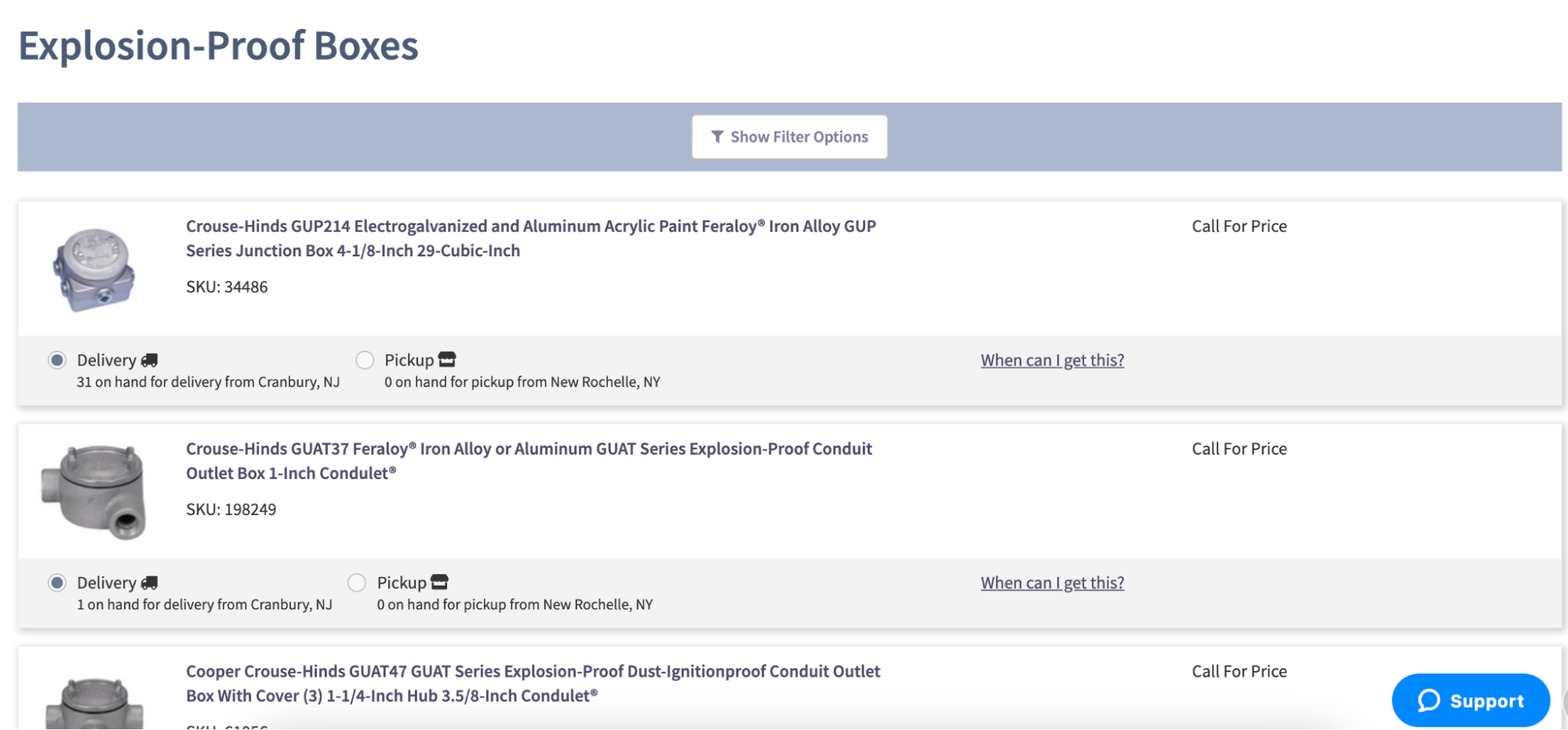Add InstantSearch and Autocomplete to your search experience in just 5 minutes
A good starting point for building a comprehensive search experience is a straightforward app template. When crafting your application’s ...
Senior Product Manager


A good starting point for building a comprehensive search experience is a straightforward app template. When crafting your application’s ...
Senior Product Manager

The inviting ecommerce website template that balances bright colors with plenty of white space. The stylized fonts for the headers ...
Search and Discovery writer

Imagine an online shopping experience designed to reflect your unique consumer needs and preferences — a digital world shaped completely around ...
Senior Digital Marketing Manager, SEO

Winter is here for those in the northern hemisphere, with thoughts drifting toward cozy blankets and mulled wine. But before ...
Sr. Developer Relations Engineer

What if there were a way to persuade shoppers who find your ecommerce site, ultimately making it to a product ...
Senior Digital Marketing Manager, SEO

This year a bunch of our engineers from our Sydney office attended GopherCon AU at University of Technology, Sydney, in ...
David Howden &
James Kozianski

Second only to personalization, conversational commerce has been a hot topic of conversation (pun intended) amongst retailers for the better ...
Principal, Klein4Retail

Algolia’s Recommend complements site search and discovery. As customers browse or search your site, dynamic recommendations encourage customers to ...
Frontend Engineer

Winter is coming, along with a bunch of houseguests. You want to replace your battered old sofa — after all, the ...
Search and Discovery writer

Search is a very complex problem Search is a complex problem that is hard to customize to a particular use ...
Co-founder & former CTO at Algolia

2%. That’s the average conversion rate for an online store. Unless you’re performing at Amazon’s promoted products ...
Senior Digital Marketing Manager, SEO

What’s a vector database? And how different is it than a regular-old traditional relational database? If you’re ...
Search and Discovery writer

How do you measure the success of a new feature? How do you test the impact? There are different ways ...
Senior Software Engineer

Algolia's advanced search capabilities pair seamlessly with iOS or Android Apps when using FlutterFlow. App development and search design ...
Sr. Developer Relations Engineer

In the midst of the Black Friday shopping frenzy, Algolia soared to new heights, setting new records and delivering an ...
Chief Executive Officer and Board Member at Algolia

When was your last online shopping trip, and how did it go? For consumers, it’s becoming arguably tougher to ...
Senior Digital Marketing Manager, SEO

Have you put your blood, sweat, and tears into perfecting your online store, only to see your conversion rates stuck ...
Senior Digital Marketing Manager, SEO

“Hello, how can I help you today?” This has to be the most tired, but nevertheless tried-and-true ...
Search and Discovery writer
Optimizing the Search and Navigation experience on your B2B ecommerce site is an essential step towards digitizing your B2B business. The next step is configuring a well-designed merchandising strategy, including incorporating AI tools, leveraging the “wisdom of a crowd” with automatically generating synonyms and product recommendations, and dynamically re-ranking search results and the order in which products are presented on the category pages. Personalization adds another layer on top of this design.
Personalizing search results and category pages for each user not only minimizes the time shoppers spend searching for products, which we know is a highly important factor and best practice for B2B shoppers, but it also ensures that users always see results most relevant to their unique preferences. Implementing a personalization strategy ensures that each user has a different ecommerce experience on the B2B site that match the user’s specific needs and shopping habits. The expected result will be an increase in customer satisfaction, which is vital to B2B ecommerce success, since a single “user” can actually represent a multitude of users from a large corporation and be responsible for placing large purchase orders. Considering the importance of each single shopper’s experience for the B2B industry, the user journey on an ecommerce site for B2B might be of even higher importance than it is for B2C retailers.
Personalization can have several meanings for B2B companies. In addition to the behavioral personalization at the user level we just discussed, there is a need for personalization at the account level. This type of personalization addresses specific needs of B2B commerce. For B2B companies, selling products and services to other businesses can imply having specific catalogs, prices, or SKUs, which can all be personalized at the account level.
Types of personalization for B2B ecommerce site:
B2B product catalogs tend to be complex, with many product variations and specific terms and conditions for each buyer account. Often, the B2B purchasing process is also more complicated compared to B2C, involving different users with different permissions.
For instance, a buyer within an account may have rights to request quotes for a product but not actually make the purchase, or see a different version of your product catalog depending on the products they’re allowed to purchase. When individual buyers search or browse, they expect to find only products they’re entitled to see.
With Algolia, you can use secured API keys to ensure each signed-in user can search or browse only the part of the product catalog they’re entitled to access.

For example, you can use secured API keys to:

https://www.algolia.com/doc/guides/security/api-keys/#secured-api-keys
Pricing, inventory stock, and other conditions are customized for each buyer account according to the specific agreements between B2B buyers and sellers. With Algolia, you can ensure that each buyer sees the conditions that apply to them.
Strategies to adopt to handle flexible prices and other conditions, depending on your pricing structure:
Note: Inventory availability or shipping delivery time for a given product could vary depending on B2B buyers. For example, the B2B sellers can allow Apple to buy 10 units and Microsoft to buy 20 units. Pricing and inventory availability would need to be personalized and reflected in real time.
You can choose from many available solutions when implementing personalized pricing. The decision might depend on the business needs and architectural dependencies or other functional limitations. The solution evaluation criteria should consider scalability/record count, usability, and impact on functionality of features such as personalization, merchandising, dynamic re-ranking, recommend, analytics, dashboard usability, filtering & sorting, as well as indexing performance.
An example of a personalized pricing strategy implementation would be lazy-loading pricing information, using one index per customer or per user group:

https://www.algolia.com/doc/guides/solutions/ecommerce/b2b-catalog-management/tutorials/personalized-pricing/
In the example below, the B2B ecommerce website either requires customers to login to see a specific price or to connect to a sales representative to verify pricing information, according to the previously negotiated prices.

End business users are able to search custom aliases by SKU. For example, a representative for the business commonly ordering a set of cleaning products on the B2B site will be able to enter an alias query “cleaning products” and see a list of all the products typically ordered by them. This type of custom aliases will be unique for a specific user and not available to others. Each of the custom aliases will be personalized for the specific business user profile.
Personalization strengthens interactive search by adding a personal layer to the relevance strategy. Adding personalized preferences to the search experience makes results more engaging for individual users.
Behavioral personalization allows B2B sites to incorporate historical customer signals in ML to intelligently rank the results, based on data such as:
When deciding on the personalization strategy, companies need to first analyze which customer signals hold the most value for their business. This will enable companies to control and “customize” the way personalization is applied on the website. For example, we can assign different weights to different aspects of customer behavior, such as assigning higher importance to brand vs. store.
Personalized Query Suggestions: show different users different suggestions for the same query, based on their Personalization profile.
1:1 Personalization: personalize search and browse results to each user profile, based on prior user behavior on the site and unique user preferences. B2B customers often use the same categories and sub-categories when placing orders. Considering that, in most cases, business users need to log in to be able to browse the catalog and make purchases, it’s highly beneficial to track their behavior on the site and personalize their shopping experience.
Personalization is important for the B2B ecommerce industry. There are multiple strategies that can be borrowed from the B2C best practices, such as behavioral personalization. At the same time, there are certain unique aspects and requirements which are particularly common in the B2B industry, such as personalized catalogs and pricing that need to be addressed effectively in order to provide a superior ecommerce experience. By carefully planning digital transition and implementing B2B ecommerce solutions step-by-step B2B retailers will be able to keep up with B2C industry trends and match the shoppers’ expectations from B2B ecommerce sites. Moreover, a composable commerce approach will offer the flexibility and scalability that wouldn’t be available in a traditional tech stack architecture. This approach is giving B2B companies the freedom to evolve fast and become an industry leader. The key to success in B2B ecommerce is to be always ready to adapt to new trends, and to meet the buyers’ expectations and needs at every step of the process.
Product Manager
Powered by Algolia Recommend